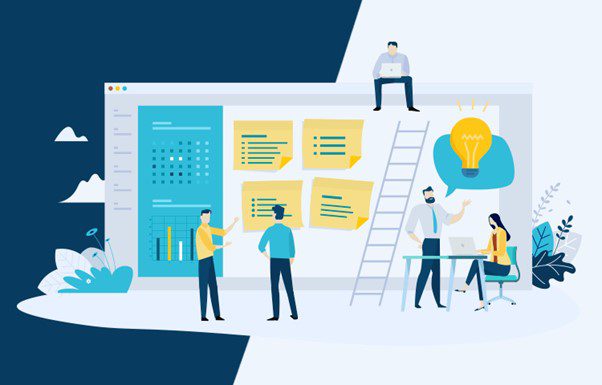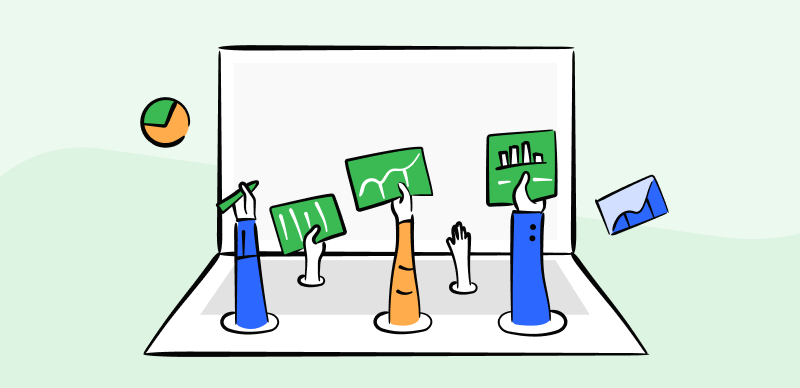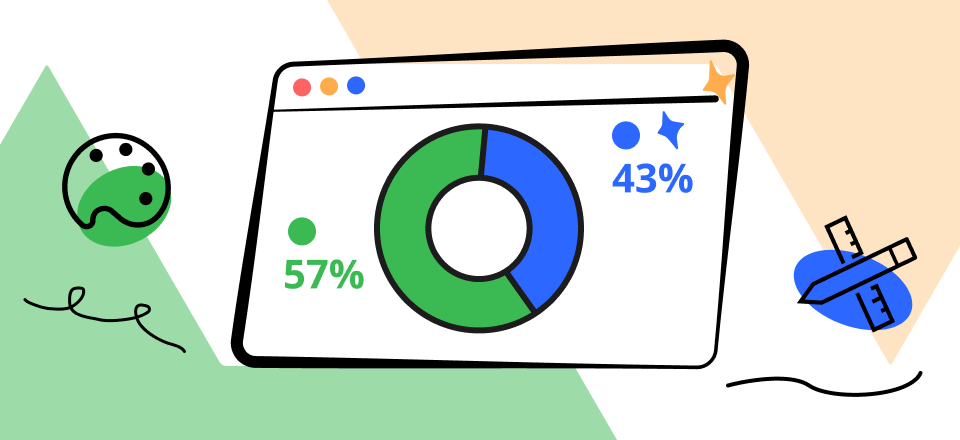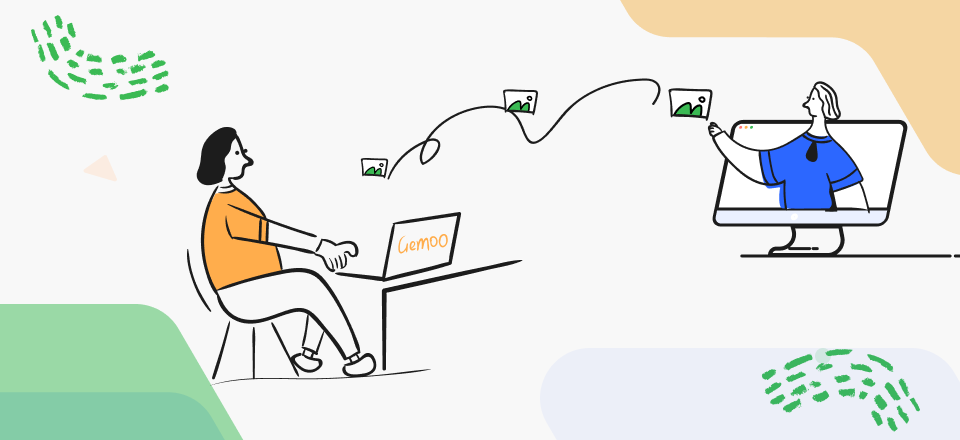Most businesses have custom apps and software that streamline internal processes. These programs are intended to aid workers in doing jobs more streamlined and straightforwardly. Yet, most business applications are withdrawn after just a few years. This is because there are significant shortcomings in enterprise apps for UI/UX design.
Enterprise software is noticeably lacking in this area compared to the attention paid to UI/UX in consumer-facing solutions. They couldn’t be more different in terms of importance, focus, and overall quality. However, if you’re unaware of the Enterprise Software UX Design, you’re at the right place. In this article, you’ll discover what UX design is and why enterprise UX design is essential. Let’s get started!
Table of Contents: hide
What is an Enterprise UX Design?
Why Enterprise UX Design Is Important for Business?
How Enterprise UX Design Can Benefit Enterprise?
What is an Enterprise UX Design?
Enterprise UX describes the design of business goods or those used by people in the workplace. Users are internal business personnel, not end-users, which means that each enterprise solution is developed with a particular industry, job function, or company in mind. Team management software, intranets, enterprise resource planning software, and customer relationship management software are all good examples of enterprise UX.
The target of enterprise UX is to enhance business users’ technological experience. Enterprise UX seeks to improve productivity and employee satisfaction by streamlining and simplifying routine work activities.
More importantly, enterprise user experience is critical to companies because it influences the business result. When workers are provided with resources that improve productivity, businesses benefit. An effective company UX paves the way for a successful organization.
Why Enterprise UX Design Is Important for Business?
Enterprise user experience design that is thoughtfully crafted can make a noticeable difference in how productive an organization’s employees are. Have you heard of any 21st-century businesses that are still using technology that was developed in the 1980s? Companies that can’t keep up with the rapid pace of technological development risk falling behind in their industry and seeing an increase in staff turnover.

Why Enterprise UX Design Is Important for Business
When enterprise collaboration software is redeveloped with UX design in mind, users naturally become more productive. As a result of smart design, routine chores become less of a strain, management of operations becomes less so, and customer satisfaction rises as a direct result of improved efficiency.
Designing for the enterprise user experience helps businesses make better decisions. UX data visualization and automation of manual operations considerably reduce room for mistakes and make it simpler for business leaders to survey and use information gathered over time.
How Enterprise UX Design Can Benefit Enterprise?
The usability of enterprise software is often overlooked in favor of the product’s core features. By considering the needs of the target audience and creating intuitive solutions, a quality enterprise UX design may provide several benefits for businesses. Employees often spend 8-10 hours each day using enterprise software. Redesigning such systems to be simple and quick to use improves productivity among workers. Time is also saved because of the site’s user-friendliness and well-thought-out design. Increased output is a direct result of this.
Employees are worn down by the persistent complexity of these enterprise apps due to the vast amounts of data and features they must process daily. Poor corporate UX design will stunt the company’s expansion. Good corporate UX design makes information-rich interfaces more digestible via visual analytics and dashboards. Users can swiftly assemble crucial data and make more well-informed choices.
Practical cooperation requires open communication within the group. Establishing a collaborative team is crucial in today’s mixed workplace. Enterprise UX design can enhance organizational communication by including message functions on par with consumer-facing programs.
4 Tips for Enterprise UX Design
Now that you know what enterprise software UX design is and how businesses can benefit from it, you must wonder how you can improve it for your business, and that’s what you’ll get here! Enterprise software UX design helps the employees understand the data and their tasks properly, which saves a lot of time. To help you understand, we’ve covered four tips in this section for your enter software UX design:
🚩 Carry out Proper Research
End-user research is important even when consumers aren’t the ones shelling out cash for a service or product. Enterprise software applications need equal levels of study from their creators as consumer software applications to ensure they successfully meet their intended purposes. User personas, questionnaires, and usability testing are all excellent methods for learning more about the internal application users in an organization and how to build a solution that yields the intended results from a redesign.
🚩 Focus on End Users
In most cases, the customer and the end-users are two separate people. Executives may be involved in creating the dashboard web design and business UX design, but they may not be the ones who spend all day every day interacting with the program. The whole company benefits from a successful system, although certain divisions may reap more rewards than others.
Such people are the ultimate targets of an enterprise’s user experience; therefore, it’s crucial that the designers put all their attention on what they want, need, and how they act. They must understand the specifics of how these users will be interacting with the app. To create a user-friendly dashboard design and a powerful business UX design system, one must be able to evaluate data and put themselves in the shoes of the target audience.
🚩 Make A Simple User Interface
Enterprise software solutions may be daunting or confusing for vast swathes of end users due to the long and complicated nature of the procedures they are meant to support. Confusion about how a solution works may lead to user annoyance and ultimate desertion, resulting in the development of data islands and a decrease in ROI.
To counter this, designs should emphasize ease of use by eliminating unnecessary features and streamlining the information architecture as much as possible. Labeling systems that are concise and easy to understand and that limit the number of choices available is an effective strategy to avoid confusing users. An additional benefit of adopting a design system strategy is easily incorporating subsequent enhancements into the existing, streamlined framework.
🚩 Test the Design Iteratively
Because established enterprise applications are utilized by a base of employees with various aims covering the entire company, building a widely functioning interface is difficult. Enterprise designs should be continuously tested and iterated until a solution works for the largest possible user base. Since designers need to do usability testing and collect feedback before making incremental adjustments, this process might take some time.
The Future of Enterprise UX
Enterprise UX’s future is improving user engagement, pleasure, and productivity. To do this, machine learning and artificial intelligence developments will allow for a more customized experience for each user. Design systems will also play a larger role in the future to guarantee uniformity and continuity across various software and hardware.
Improving productivity and efficiency is a future incentive for enterprise UX. Enterprise UX designers must create user interfaces that simplify processes and automate mundane chores so that people can devote their time and energy to more meaningful activities. Similarly, customization will be crucial in boosting efficiency by giving people easy access to the resources they use most often. To get there, designers must work closely with users and other stakeholders to identify problems and enhancement areas, then put their hypotheses to the test and iterate on their solutions until they meet the desired outcomes.
Final Thought
There is a critical need for companies to invest in developing a visual system that serves to maintain the focus of their staff. A clear correlation exists between the quality of an enterprise’s user experience design and the company’s success. While the quantity of information and functionality available in enterprise software programs might seem to limit, the constraints force enterprise UX designers to become more innovative. But with the tips discussed in this article, you can create an amazing Enterprise Software UX Design that your staff will be pleased to use for years. Moreover, if you’ve questions about enterprise UX design, feel free to leave them in the comments.



